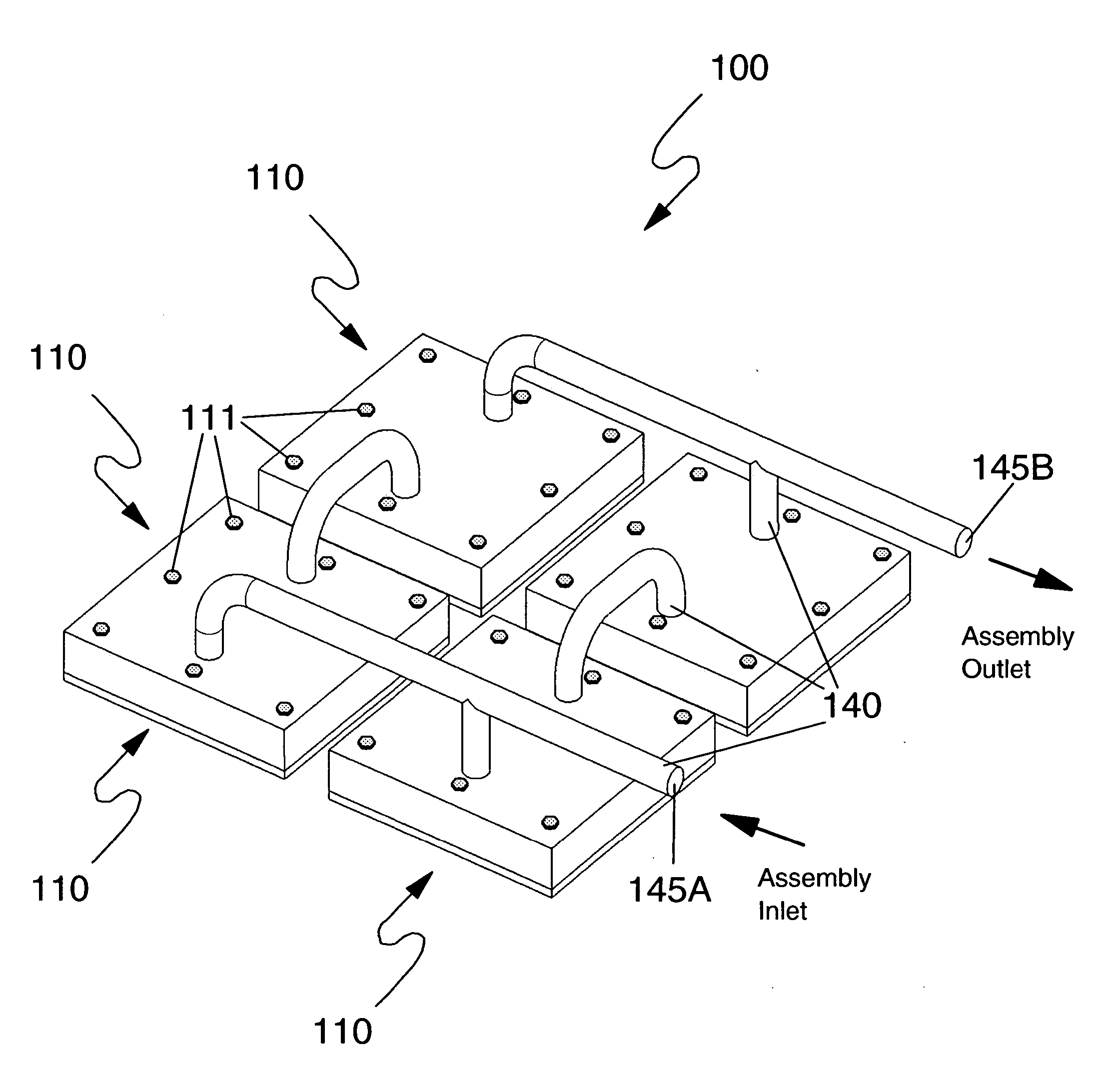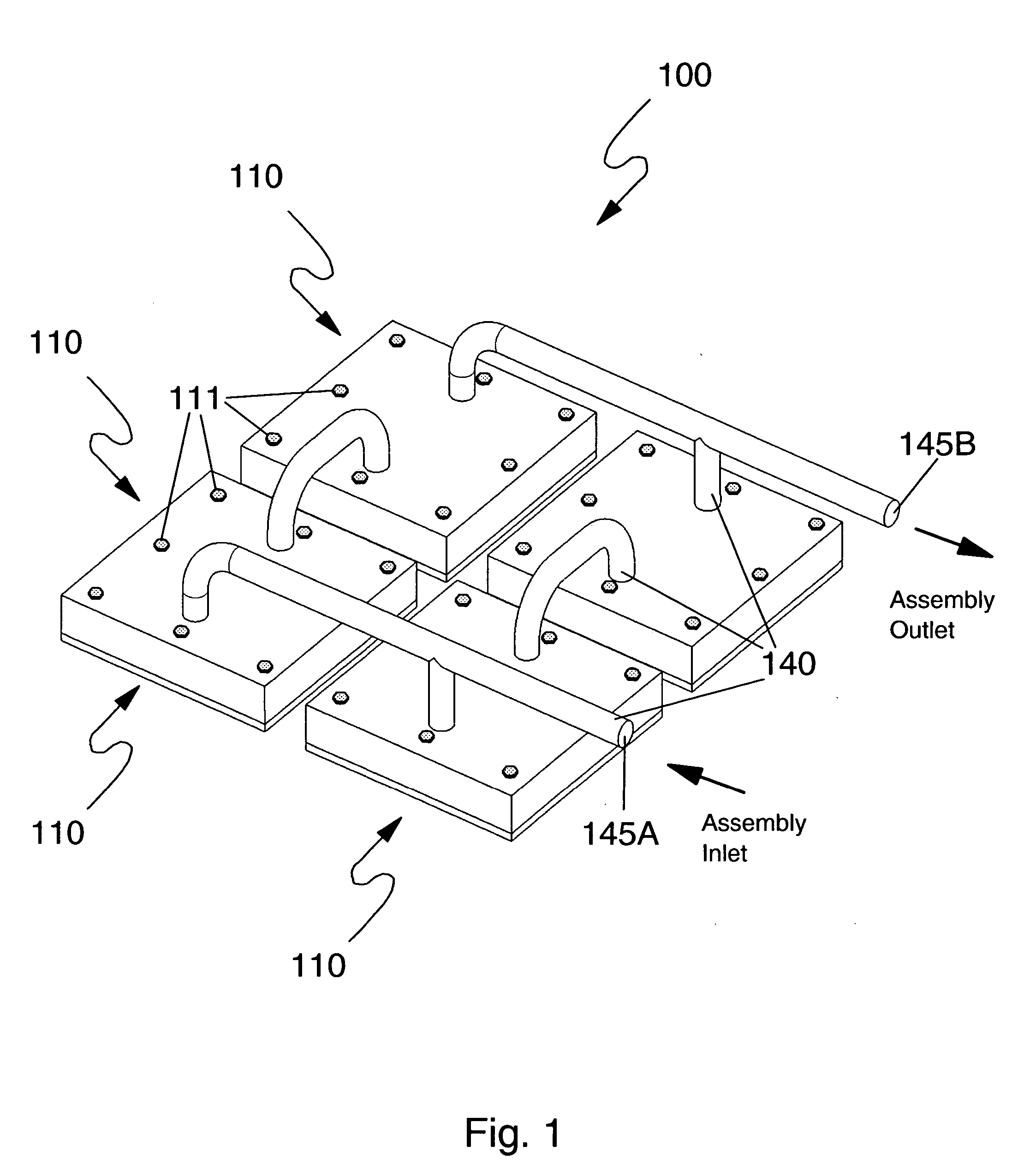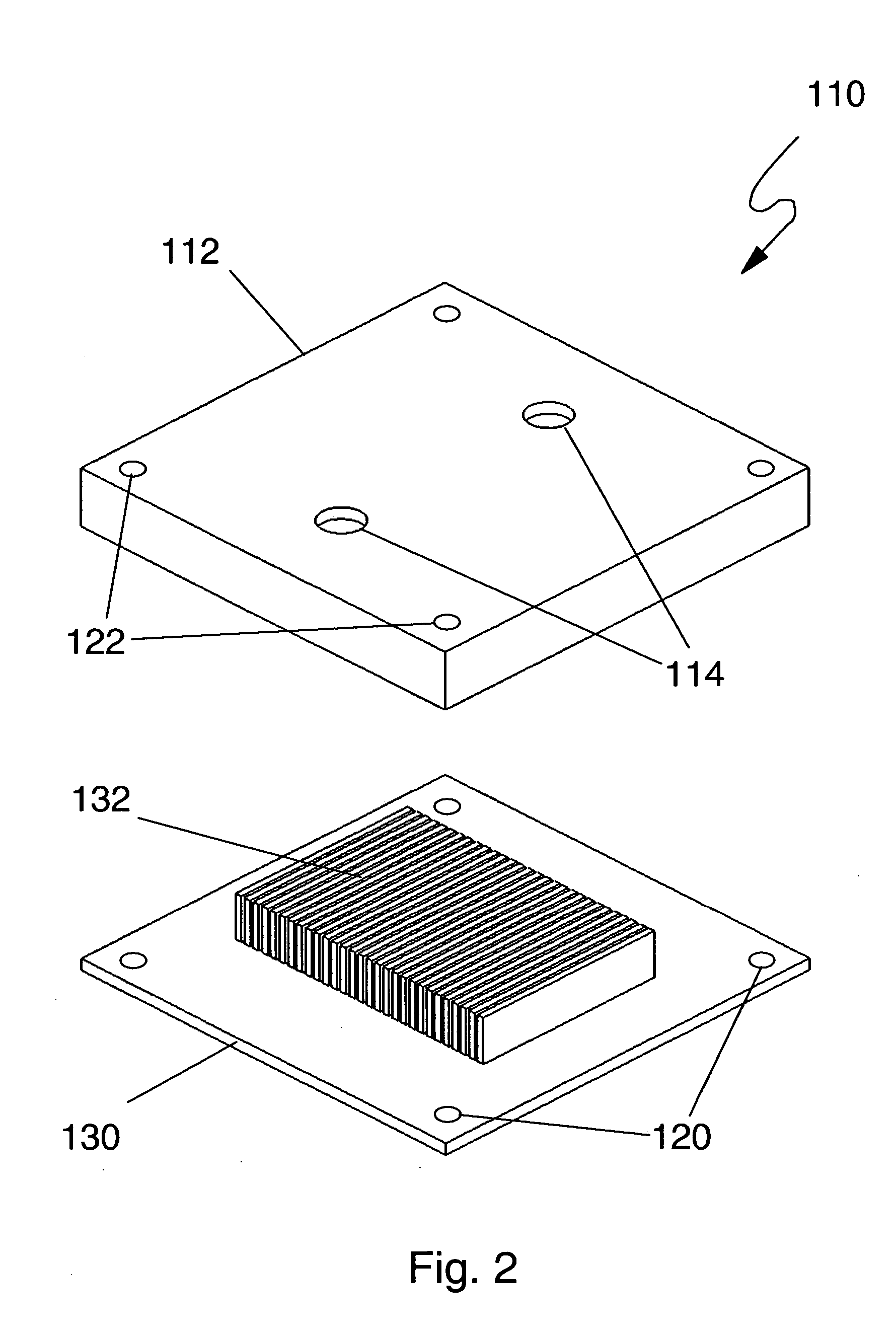Composite cold plate assembly
a technology of composite cold plate and assembly, which is applied in the direction of cooling/ventilation/heating modification, semiconductor device details, semiconductor/solid-state device details, etc., can solve the problems of increasing device temperature, power dissipation, and therefore heat production, and achieves sufficient assembly flexibility, good thermal contact, and reduced mechanical conduit connections
- Summary
- Abstract
- Description
- Claims
- Application Information
AI Technical Summary
Benefits of technology
Problems solved by technology
Method used
Image
Examples
Embodiment Construction
[0025] In accordance with preferred embodiments of the present invention, a multi-cold plate fluid distribution assembly utilizing a composite cold plate structure is disclosed herein.
[0026]FIG. 1 illustrates a multi-cold plate fluid distribution assembly, per an embodiment of the present invention. The assembly of FIG. 1 is exemplary only; other assembly configurations are envisioned within the spirit and scope of the present invention. As illustrated in FIG. 1, a fluid distribution assembly of the present invention includes a plurality of cold plates 110: in the exemplary embodiment of FIG. 1, assembly 100 includes four cold plates 110. The teachings of the present invention are applicable to any system having two or more electronic modules: as used herein, therefore, the term plurality equates to a quantity of two or more. Assembly 100 also includes a plurality of flexible, nonmetallic conduits 140. Conduits 140 are sealably affixed to cold plates 110, thereby creating fluid dis...
PUM
 Login to View More
Login to View More Abstract
Description
Claims
Application Information
 Login to View More
Login to View More - R&D
- Intellectual Property
- Life Sciences
- Materials
- Tech Scout
- Unparalleled Data Quality
- Higher Quality Content
- 60% Fewer Hallucinations
Browse by: Latest US Patents, China's latest patents, Technical Efficacy Thesaurus, Application Domain, Technology Topic, Popular Technical Reports.
© 2025 PatSnap. All rights reserved.Legal|Privacy policy|Modern Slavery Act Transparency Statement|Sitemap|About US| Contact US: help@patsnap.com



